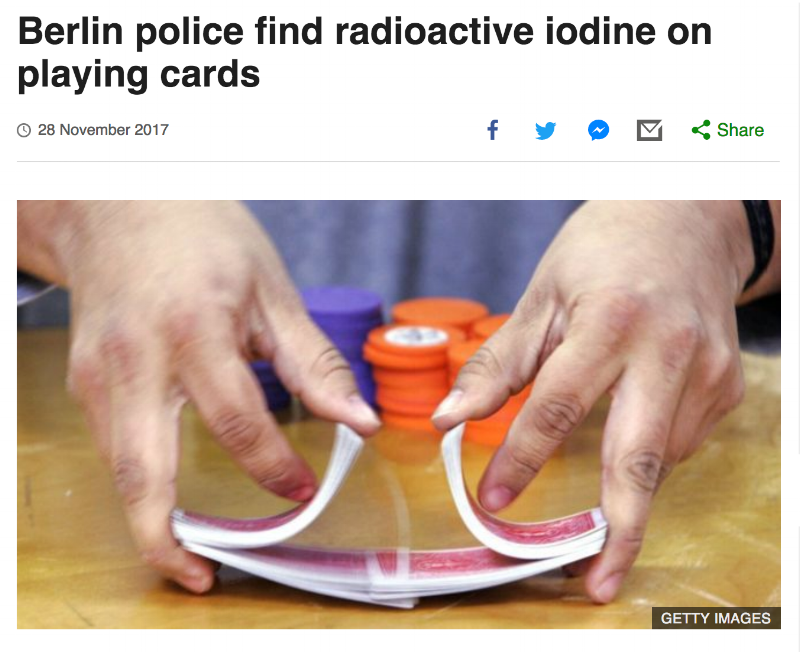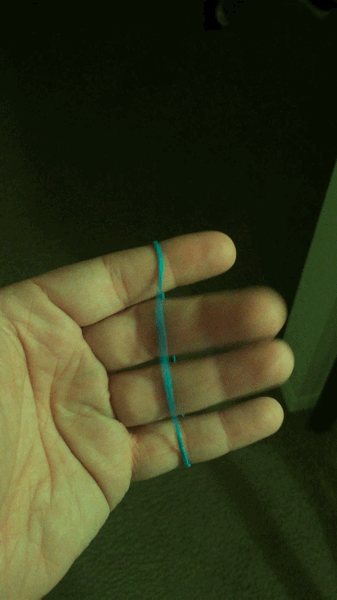Gardyloo #43
/Hey, why can't it be both?
This is the first holiday season I've been around writing this site regularly. The first year of this site I ran old MCJ posts during December. The second year, I was between "seasons." But this year I'll be with you throughout the festive season. Don't forget to pause and enjoy it.
But I'm not religious, Andy.
Me neither! But I like giving gifts and parties and eating food and singing songs and baking cookies and snowy moonlit walks and the smell of pinetrees and good will towards men and all that junk.
Guys, I know misdirection works. I know it's a fundamental tool of magic. And certainly in the flow of a routine it can be invisible.
My point in my post earlier this week was this: If you have something that is an object of interest or suspicion and you pull focus from that object with (as Tommy Wonder says) something (a statement, a question, another object) that is "thoroughly intriguing," do not think you've fooled people when the original object is now changed in some way when they return their focus to it.
I was thinking about this because of the recently released trick by Phill Smith called Humint. This is a business card peek and a token that the spectator flips in order to decide if they're going to lie or tell the truth during a game of 20 questions. Phill gets the peek while the spectator is looking at the token. In my opinion, that's the wrong time to get it. This misdirection is actually too strong. His coin is a "thoroughly intriguing" object, and the fact of the matter is, even if the card with their word on it really was buried in the stack of business cards, it's not inconceivable that you could crack the stack open and peek at their word in that moment when their focus is thoroughly "misdirected."
This is, I think, this mistake in Tommy Wonder's essay where he says misdirection should be about, "Presenting something of greater interest that attracts attention." That's exactly what the audience's understanding of misdirection is. They're on guard for that. In my experience, the strongest misdirection of attention is done with something that is so dull as to be unmemorable. A secret move that is covered by the misdirection of a natural, forgettable action (adjusting your glasses or straightening a close-up pad), is going to result in a much more "magical" effect than a secret move that is covered by directing their attention to something more interesting (and therefore more memorable).
The problem is that there is a thin line between misdirection that is subtle enough to be forgotten, and that which is too subtle to work. This is the problem that occurs when you're trying to misdirect their attention.
That's why I think you're better off misdirecting the focus of their suspicion. You can't have "too much" misdirection of suspicion.
I'm not sure if this is clear or not.
Imagine you have a coin in your hand and you want to make it vanish via misdirection.
Misdirection of Attention
Too little: A subtle gesture that doesn't cause your spectator's focus to leave your hand.
Too much: Fonzie walks in from the room and hits your tv like the jukebox in Happy Days and a porno starring your spectator's parents starts playing on the tv. When he turns back to you, the coin is gone.
Just right: A comment to your spectator causes a brief moment of eye-contact at the same time the coin rolls out the back of your fist into your breast pocket.
It can be hard to hit that "just right" moment that lies between "I saw what you did" and "I missed it, but you obviously did something when I was distracted."
Misdirection of Suspicion
You encourage them to watch your hand as closely as possible but the coin still vanishes because they were watching the wrong hand from the beginning.
You might say, But Andy, you're talking about something different than what we usually talk about when we consider "misdirection."
Yeah. I know. That was my point, goofball. My point was just that we often resort to misdirection of attention to get an audience to look in the wrong location, when it might be a stronger technique to misdirect their suspicion to get them thinking in the wrong location.
Here's a genuine story that's ripe for use in some kind of routine.
Maybe you have someone pull a card from a deck, you turn away while they look at the card and then turn back, have them re-insert the card and shuffle the deck. You spread the cards over the table and are able to find their card.
"Let me show you how I did it," you say.
You bring up that article about the cards. "I actually have one of these decks that's made with radioactive ink." You pull a second deck out of your pocket. "This was the deck you originally picked the card from. I switched it for this other deck when I turned around. So I had you replace the radioactive card into the normal deck. Now just by waving my hand over the cards I can find yours. It's just something you get a feel for. One of the cards will just radiate a different energy. Like, literally. It will give you like...hmmm... how do I put this... like a shooting pain through your spine? I guess that's how I'd put it. It's probably not great for you to be around this deck all day. And I can't imagine it's doing wonders for me in my pocket so close to my scrotum. But that's a small price to pay to be Mr. Cool Magician."
You then give them a wink and run your hand through your hair like a stud. You grimace a little and pluck out a handful of hair that apparently came out of your scalp. "Hmmm...," you say. You start moving your lower jaw back and forth and poking your tongue to the side of your mouth. Then you spit a tooth on the table. "Aw, crud," you say.
Method:
A fake tooth in the side of your mouth. Some hair that you can pull from your pocket at an opportune moment. (Put both hands in your pockets to get the second deck during "explanation," remove the deck first, then remove your other hand with the hair curled in your fingers.). And two identical decks of bicycle cards. One with the middle circle filled in with a marker that matches the back color so you can identify one card from a deck placed into the other.
[Thanks to David Thomas for sending the link my way.]
Here's a creative exercise for you. Go bak to Monday's post. Now reimagine the routine using these rubber bands.
The readership here is primarily men, and I realize the holiday time can be stressful when it comes to knowing what to get for the women in your life.
If you're anything like the typical magicians I've met, then I think I know the gift your wife is wanting—if not craving—this year.





















